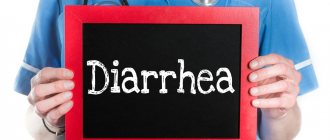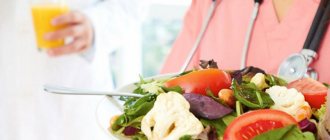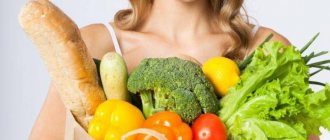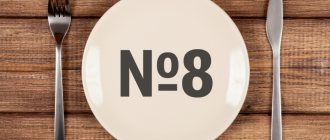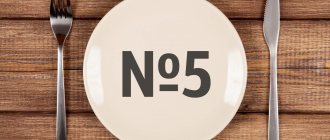The most strict diet. Diet 0 according to Pevzner is prescribed after surgery on the digestive organs, including when the patient is unconscious.
The “Table 0” diet after surgery will provide the patient’s body with the necessary amount of calories and nutrients, provided there are contraindications to eating solid food. In addition, treatment table number 0 according to Pevzner guarantees maximum unloading of the gastrointestinal tract and prevents the formation of gases in the intestines.
0 The nutrition table consists of three stages, the purpose of which is to gradually transfer the patient to the regular menu.
- 0 "A"
- 0 "B"
- 0 "B"
Read more about diets 1 to 15 in another article, find out which one is right for you.
What is the purpose of the treatment program?
The purpose of the technique is to restore the patient’s vitality , replenish nutrients and increase immunity.
The system was created for a weakened body: it reduces the load on the digestive organs and promotes a speedy recovery.
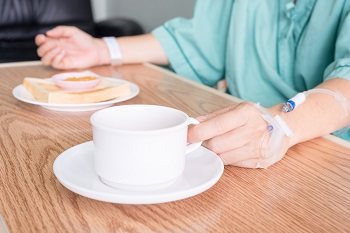
Diet has a complex effect on the body:
- Normalizes the functioning of the digestive organs.
- Fills a weakened body with useful substances.
- Increases immune defense against pathogenic bacteria.
- Relieves abdominal pain, discomfort, flatulence that occurs after surgery.
- Improves condition and well-being.
General indications for the use of the technique: rehabilitation period after surgery on the gastrointestinal tract, acute gastritis, poisoning, cerebrovascular accident, traumatic brain injury.
During the diet, you should not consume salt, sugar, spices, sour and salty foods. Legumes, whole milk, cabbage, and solid foods are excluded from the menu.
In the table 0 diet, liquid dishes are allowed: porridge, purees, broths. Replace coffee with weak tea, compote, fruit and berry jelly.
Diet 0b
This is the last stage of the surgical diet, which involves gradually preparing the patient to return to his usual diet.
Add to the previous menu:
- dried white bread;
- pureed soups, cream soups;
- dishes made from pureed meat and steamed fish;
- dairy products;
- baked apples;
- porridges cooked with milk;
- fruit and vegetable purees.
Following all the rules of the diet will help you get out of the postoperative period as quickly as possible. The diet will contribute to the speedy recovery of the patient, since it is rich in all substances beneficial to the body. Preparing food for each stage will be completely easy, since the products intended for consumption are sold in any market and are easy to process.
Advantages and disadvantages
Advantages of the technique:
- Effectiveness proven in practice: patients recover quickly.
- Beneficial effects on the body.
- The dishes included in the menu give you a feeling of fullness, but do not cause overeating.
- The menu is quite varied.
The diet has not only advantages, but also disadvantages. The disadvantages of the method are the need to prepare only liquid dishes; you need to grind the products, grinding them as much as possible.
The system is strict , any violation of the rules may lead to a deterioration in the patient’s well-being. You need to follow the menu without deviating from it.
The difficulty also lies in the fact that it is necessary to monitor the temperature of the dishes . They should not be hot or cold; warm, slightly cooled dishes are acceptable. A weakened person after surgery will not be able to follow the procedure on his own, follow all the rules, and cannot do without the help of loved ones.
The system has no contraindications. It does not harm the body, but has a beneficial effect on it. However, only a specialist can prescribe it.
Authorized Products
Zero diet for peptic ulcer disease includes:
- Wheat bread crackers. Their amount gradually increases from 50 to 100 g per day.
- Puree and cream soups from cereals, vegetables, fish and meat. They add an egg-milk mixture and cream. Vegetables used include potatoes, carrots, cauliflower, pumpkin, and zucchini. You can also add pureed beef liver to soups.
- Puree porridge with milk or water: semolina, rice, oatmeal, buckwheat. Somewhat later, when expanding the diet, you can introduce barley and pearl barley porridge (if well tolerated).
- Vegetables in the form of puree. You can use potatoes, carrots, zucchini, pumpkin and add butter or vegetable oil to prepared dishes.
- Lean meat of young animals (beef, veal, chicken, rabbit). First they are prepared in the form of puree, soufflé, and then in the form of steamed cutlets. However, at first, cutlets should not be consumed frequently.
- Low-fat varieties of fish prepared in the form of pates, purees, soufflés and cutlets. Even later, lumpy boiled fish is introduced. For cooking, you can use cod, ice cod, pollock, pike perch, pike, navaga, blue whiting or notothenia.
- Milk and cream added to dishes, pureed cottage cheese, which is diluted to a semi-liquid state, dishes made from cottage cheese, milk jelly, fermented milk drinks.
- Eggs up to 2-3 per day in the form of steamed omelets and soft-boiled.
- Fruits and berries - only heat-treated and pureed (mashed potatoes, baked apples, jellies, mousses, jelly and compotes with pureed fruits).
- Juices: plum, apricot, peach, rosehip decoction, vegetable juices, weak tea, weak coffee with milk.
- Butter and vegetable oil for dishes.
Table of permitted products
| Proteins, g | Fats, g | Carbohydrates, g | Calories, kcal | |
Vegetables and greens | ||||
| cauliflower | 2,5 | 0,3 | 5,4 | 30 |
| potato | 2,0 | 0,4 | 18,1 | 80 |
| carrot | 1,3 | 0,1 | 6,9 | 32 |
| pumpkin | 1,3 | 0,3 | 7,7 | 28 |
Cereals and porridges | ||||
| buckwheat (kernel) | 12,6 | 3,3 | 62,1 | 313 |
| semolina | 10,3 | 1,0 | 73,3 | 328 |
| cereals | 11,9 | 7,2 | 69,3 | 366 |
| white rice | 6,7 | 0,7 | 78,9 | 344 |
| barley grits | 10,4 | 1,3 | 66,3 | 324 |
Confectionery | ||||
| jelly | 2,7 | 0,0 | 17,9 | 79 |
Raw materials and seasonings | ||||
| honey | 0,8 | 0,0 | 81,5 | 329 |
| sugar | 0,0 | 0,0 | 99,7 | 398 |
| milk sauce | 2,0 | 7,1 | 5,2 | 84 |
Dairy | ||||
| milk | 3,2 | 3,6 | 4,8 | 64 |
| cream | 2,8 | 20,0 | 3,7 | 205 |
Cheeses and cottage cheese | ||||
| cottage cheese | 17,2 | 5,0 | 1,8 | 121 |
Meat products | ||||
| boiled beef | 25,8 | 16,8 | 0,0 | 254 |
| boiled veal | 30,7 | 0,9 | 0,0 | 131 |
| rabbit | 21,0 | 8,0 | 0,0 | 156 |
Bird | ||||
| boiled chicken | 25,2 | 7,4 | 0,0 | 170 |
| turkey | 19,2 | 0,7 | 0,0 | 84 |
Eggs | ||||
| chicken eggs | 12,7 | 10,9 | 0,7 | 157 |
Oils and fats | ||||
| butter | 0,5 | 82,5 | 0,8 | 748 |
Non-alcoholic drinks | ||||
| mineral water | 0,0 | 0,0 | 0,0 | — |
| black tea with milk and sugar | 0,7 | 0,8 | 8,2 | 43 |
Juices and compotes | ||||
| apricot juice | 0,9 | 0,1 | 9,0 | 38 |
| jelly | 0,2 | 0,0 | 16,7 | 68 |
| carrot juice | 1,1 | 0,1 | 6,4 | 28 |
| peach juice | 0,9 | 0,1 | 9,5 | 40 |
| plum juice | 0,8 | 0,0 | 9,6 | 39 |
| pumpkin juice | 0,0 | 0,0 | 9,0 | 38 |
| rose hip juice | 0,1 | 0,0 | 17,6 | 70 |
* data is per 100 g of product
Rules for creating a diet for every day
It is very difficult to create a menu on your own ; you need to know the specifics of the diet.
Experts have created a menu for the week for the “Table 0” diet, which looks like this:
| Day of the week | Breakfast | Dinner | Dinner |
| Monday | Liquid jelly from non-acidic berries, oatmeal | Meat broth, rice porridge | Fruit jelly, weak tea |
| Tuesday | Rose hip decoction, steam omelette | Vegetable broth soup, ground beef, buckwheat porridge | Compote, applesauce |
| Wednesday | Weak tea, rice porridge | Ground fish with barley | Kissel, omelette |
| Thursday | Fruit mousse, compote | Vegetable broth, oatmeal | Rosehip berry decoction, chopped boiled eggs |
| Friday | Kissel, fruit jelly | Shredded chicken breast, rice porridge | Carrot and apple puree, weak tea |
| Saturday | Compote, oatmeal | Meat broth, ground buckwheat porridge | Kissel, chopped omelette with pieces of vegetables |
| Sunday | Fruit and berry mousse, tea | Vegetable broth, grated fish with oatmeal | Apple and pear puree, compote |
It is recommended to include jelly, compote, and berry infusions in the menu . At least once a day, the patient should consume lean meat or fish: to do this, the product is cleaned of bones and ground, chopping as much as possible.
Soups and vegetable purees are acceptable. The diet should include porridge: buckwheat, oatmeal or rice. They are also ground to make them easier for a weakened body to absorb.
Fruit puree and omelet are acceptable . Meal portions should be small to avoid overeating. Individual adjustments can be made to the menu, which are performed by the attending physician depending on the patient’s condition. The menu is discussed with him in advance.
The frequency of food consumption is also discussed with a specialist. It all depends on how quickly a person recovers after surgery.
Read on the pages of our website about the features, advantages, pros and cons of such therapeutic diets for:
- low hemoglobin in women and men.
- enterovirus infection.
- rotavirus in adults.
- hives.
- thrush.
Dietary table No. 0: what is possible and what is not?
Let's consider which products are recommended and which are prohibited at different phases of table No. 0.
Diet No. 0a
- The diet at this stage is similar to the diet for children . Boiled or steamed products are ground several times. If the patient is unconscious, food is administered using a tube.
- Allowed to take : light chicken soups, slimy porridge with cream, decoction of dried fruits or rose hips, berry juice (diluted with water).
- It is prohibited to consume : hot and cold foods, coffee, tea, fermented milk products, fatty and fried foods, beans and mushrooms, carbonated drinks.
- The patient in this phase of the diet is fed 7-8 times a day in portions of no more than 300 grams . 750-1200 calories – daily diet.
Diet No. 0b
- The menu allows vegetable and meat (lean) purees, soufflés, and liquid porridges. Salt and sugar can be added in small quantities.
- Allowed : liquid buckwheat or oatmeal with milk, soups with cereals, steamed fish and lean meat, fruit jelly.
- The patient is fed 5-6 times a day , the portion size increases to 400 grams. The daily calorie content of consumed foods increases to 1400-1600 kcal.
Diet No. 0b
- The temperature of hot dishes can be up to 50 degrees, cold – 20.
- Allowed : fermented milk products, baked apples, puree soups, crackers, soft-boiled eggs.
- Eating - 4-6 times a day . Daily caloric intake rises to 2100-2400 kcal.
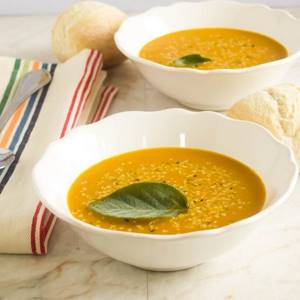
Diet number 0
Recommendations from nutritionists for the duration of compliance
In order for the patient to recover faster and the diet to have a beneficial effect, remember the recommendations of nutritionists:
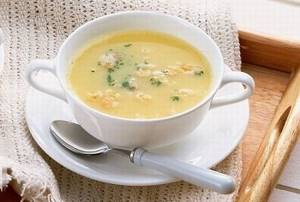
- Dishes should be liquid and ground. This reduces the burden on digestion and speeds up recovery.
- It is forbidden to fry foods: in this form they will cause significant harm to the body. Products are boiled, baked, steamed.
- There should be no coffee or carbonated drinks. They are strictly prohibited. Compotes, jelly, and berry decoctions are allowed.
- Porridges are prepared with water: milk is prohibited during rehabilitation.
After eating, you should lie down and rest. There is no need to make sudden movements or be overly active.
Food must be digested, and any activity can interfere with this. A weakened body needs recovery and rest.
Any sweets and flour are prohibited. Even if you really want it, you need to be patient. The diet is strict and does not allow deviations. Sweets can negatively affect a person’s general condition.
Therapeutic diet No. 0: menu
Of course, the menu can be slightly adjusted after consulting with your doctor, but it roughly looks like this:
- At the first stage of the diet (No. 0a), you can prepare a light broth for the patient. It is better to take chicken or turkey meat. Cook from a whole piece of meat using a secondary broth. Under no circumstances should you salt it. When cooking, you can throw in carrots, but before serving to the patient, the root vegetable must be removed.
- At the second stage of the table (No. 0b), it is possible to eat buckwheat porridge. We take the proportion 1:3, cook the cereal in clean water. After cooking, rub the porridge through a sieve several times. Before serving, the dish must cool to the optimal temperature. You can add an omelette cooked in a double boiler to the buckwheat. In this case, you need to remove the yolk. You can also make meat soufflé. The recipe for this dish is simple: chicken meat – 100 g, one egg, 60 ml of milk. Boil the meat, cool, grind a couple of times, then pass through a blender. Separate the white and yolk. Mix the yolk with the meat, beat the white until foamy. Then mix everything, add milk and steam.
- At the third stage (No. 0c), nutrition is already more like complete nutrition. A one-day menu might look like this:
- Breakfast: semolina, linden tea;
- Snack: baked apple
- Lunch: vegetable puree soup, buckwheat porridge
- Snack: cottage cheese, pear compote;
- Dinner: turkey meat soufflé, tea.
According to patient reviews, proper adherence to a diet under the supervision of a doctor or nurse helps restore the functioning of the digestive system and switch to a nutritious diet
The diet is quite strict and does not provide the body with enough vitamins and minerals. To make the body’s recovery process less painful and more gentle, you must adhere to the doctor’s recommendations.
More interesting information on the topic in the video:
Diet after surgery to remove the gallbladder. Changes in the digestive system
The gallbladder acts as a vessel in which bile accumulates and becomes concentrated. When the food mass, or chyme, passes from the stomach to the duodenum, the organ begins to contract and the concentrated enzyme enters the small intestine. Bile performs the most important functions:
- plays a major role in the digestion of fats;
- helps absorb fat-soluble vitamins;
- participates in the neutralization of the acidic environment associated with the intake of gastric juice along with the food mass;
- has bactericidal properties.
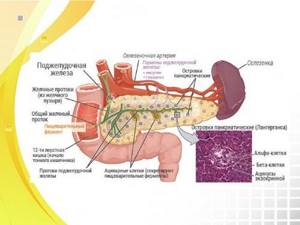
The liver constantly produces bile. In an adult, the volume of secretion produced reaches 2 liters. There are two types of bile: bladder and liver. The latter goes directly from the liver to the small intestine and contains a lower concentration of active substances. The cystic fluid contains less water and is expelled by the gallbladder through the cystic duct, this occurs during active digestion. The difference of some enzymes is shown in the table.
After cholecystectomy, cystic bile is not formed, and hepatic bile constantly enters the duodenum from the liver. Weak concentration of active substances and insufficient quantity when receiving a large volume of food masses are the main causes of digestive disorders in the first time after surgery. A therapeutic diet during gall bladder surgery will help reduce the load on the hepatobiliary system and intestines, and will shorten the time it takes for the body to adapt to new conditions.
Nutrition after gynecological surgery. Gynecological surgeries
If you're having surgery, you're probably nervous, and that's natural. The thought that a necessary operation, especially if done on time, will help you calm down can help you get rid of the disease and often save your life. And how the postoperative period goes will largely determine your future health, so it’s worth doing everything possible to restore your strength. Specialized nutrition is of particular importance at this stage. Nutrition for fibroids and other gynecological diseases should be balanced and include a set of nutrients necessary to be well prepared for surgery, because any surgical intervention is stress for the body, and it is important to meet its needs, avoiding unnecessary stress.
Special time
Women who have undergone gynecological operations such as removal of the uterus or ovaries, excision of fibroids, cesarean section or abortion can quickly recover their health and return to normal life. But we must remember that surgery and anesthesia cause a specific reaction in the body, in other words, stress that must be overcome during the postoperative period. Despite the fact that the operation causes not only a local, but also a general reaction of the body, it does not change the essence of metabolic processes, influencing only their activity and intensity.
The postoperative period is usually divided into several stages. At the beginning (from the 1st to the 3rd day), the body mobilizes all its strength in order to eliminate the negative consequences of the surgical load and restore metabolic processes. Then, within 3 - 5 days, a protective reaction occurs, aimed at the rapid delivery of necessary substances into the cells, because after surgery it is very important to replenish energy losses, so nutrition after removal of the uterus or ovaries and other gynecological operations should be complete and balanced.
Increased protein breakdown causes not only a decrease in muscle mass and a decrease in the amount of connective tissue, but also a deficiency of enzyme proteins. It is worth noting that at this stage the level of stress hormones increases and the level of insulin decreases. During the next phase, metabolic processes are activated: the synthesis of protein, fats and other substances lost during the operation and at the previous stage is enhanced. Due to this, an extremely important process of growth and development of connective tissue occurs. The functions of the cardiovascular and respiratory systems and the gastrointestinal tract are also restored.
There are general recommendations from specialists that should be followed in order for the postoperative period to be successful. Firstly, for rehabilitation, a woman needs comprehensive drug treatment. It includes antibacterial, analgesic, sedative therapy and restorative drugs. Secondly, nutrition after hysterectomy, cesarean section or abortion should contain the optimal amount of proteins, fats and carbohydrates, a complex of vitamins and minerals, as well as omega 3 fatty acids. Thirdly, we need a complex of restorative therapy, including physiotherapeutic procedures and therapeutic exercises.
The right diet
Specialized nutrition after hysterectomy and other operations is necessary in order to reduce the load on the body, help normalize metabolism, increase the body's resistance to inflammation and intoxication, and speed up the healing of the surgical wound. Another important task of such nutrition is to eliminate the deficiency of proteins and vitamins, which often develops in women who have undergone surgery under the influence of factors such as blood loss, breakdown of tissue proteins and fever. In addition, after the operation, you need to start a “stagnant” intestine, the manifestations of which are constipation and flatulence. In this regard, it is recommended to consume meat broths, fermented milk products, fresh fruits and vegetables, crumbly cereals, and vegetable oil. Remember: the diet should consist mainly of foods that have a laxative effect. The fact is that after many gynecological operations, in particular after removal of fibroids, you are not allowed to push, since such tension is a threat to the sutures remaining on the uterus. Accordingly, constipation should not be allowed to occur. They are also dangerous because irregular bowel movements provoke inflammation in the appendages and uterus. It is worth excluding from the diet those foods that slow down the intestines. These are “slimy” puree soups and porridges, as well as jelly and pureed food. It is not recommended to consume chocolate, strong tea and coffee, cocoa, cottage cheese and pomegranates. White bread and pastries are also not advisable.
Diet after intestinal oncology surgery. What can you eat if you have bowel cancer?
A gentle diet after intestinal surgery for oncology should be followed continuously for the rest of your life.
Required Products:
- vegetables, fruits and berries - to normalize intestinal motility;
- young veal and beef, sea fish for the vital activity of cells of all vital organs and systems;
- cereals and vegetable oil.
In the very first 2-3 weeks after surgery, you need to prepare juices, jellies or jelly from fruits and vegetables.
Important: intestinal cancer is a serious and insidious oncological disease. Therefore, milk and alcoholic beverages should not be on the menu for intestinal cancer, as well as raw animal food. Spices and herbs are limited. Fish and meat are boiled or steamed, then ground. Foods to Reduce Cancer Cell Growth
To defeat intestinal cancer and prevent inflammatory processes, you need to include in your diet for intestinal oncology foods that prevent the growth of cancer cells, especially those containing the element selenium. Namely:
- cabbage: broccoli and cauliflower, Brussels sprouts and cabbage;
- seafood: fish, mussels, squid;
- beef liver and eggs: chicken and quail;
- vegetables and fruits of orange (including citrus fruits: tangerines and grapefruits, pomegranates and lemons), red and yellow flowers and dried fruits;
It is important to know: tomatoes contain lycopene, which protects the body from oncogenic cells. The following berries have anti-cancer properties: strawberries, garden and forest strawberries, raspberries: red and black, blackberries, blueberries, blueberries, currants: black and red.
- greens: parsley, celery, dill and parsnips, garlic;
- fermented milk products: kefir or yogurt without additives;
- cereals, whole grains (raw rice, wheat) and bran;
- citrus fruits, including tangerines and grapefruits;
- pumpkin seeds, sunflower seeds;
- nuts: pistachios and almonds, walnuts and hazelnuts, pine;
- green tea, turmeric, ginger root for seasoning and anti-nausea, a little red chili pepper to inhibit the growth of cancer cells;
- olive oil (direct cold pressed) – 1 tbsp. l./day;
- legumes, soybeans and soy products (tofu, yogurt with soybeans);
- as additives to salads: mint, marjoram, thyme, basil, rosemary;
- mushrooms: oyster mushrooms, champignons, veselka, boletus, chanterelle, shiitake, meitake, reishi, cordyceps;
- dark bitter chocolate – 20 g/day.
It is important to know! The seeds of dark grape varieties contain anti-cancer compounds. Therefore, it is useful to drink no more than 50 ml/day of dry red wine with meals. Flaxseed and oil, fatty sea fish contain cancer-fighting fatty acids (Omega-3). Blue-green and brown seaweeds have cancer cell aggravating properties.




